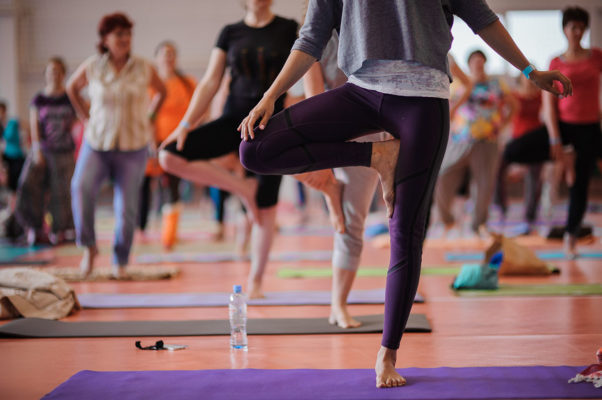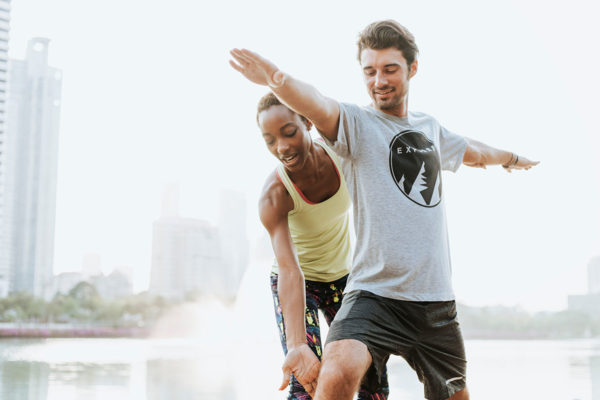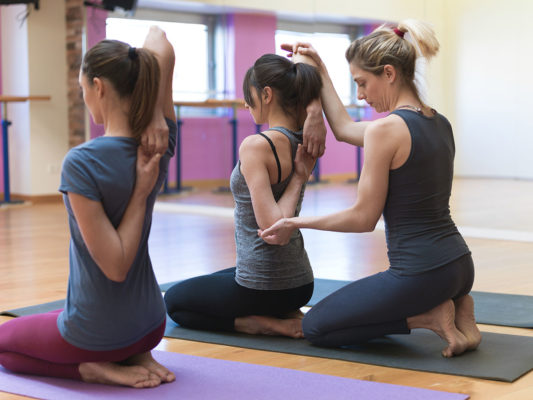You’ve completed your 200-hour yoga training and become a certified yoga instructor! Now what? It’s time to build your yoga studio and class structure.
Sequencing a yoga class can be a challenging task, even for experienced yoga teachers. A well-sequenced class can make all the difference in helping students feel grounded, balanced, and energized.
This guide provides you 10 essential tips for sequencing and examples of yoga class themes to try with your own students.
Build a Better Yoga Sequence for Your Class

What do you want your students to take away from your yoga class? With the right intention, warm-up, and overall sequence, you can build the perfect yoga routine[sequence] for your students.
Start with a Clear Intention
Before you start sequencing, it’s important to have a clear intention for your class. This could be anything from opening the heart to building strength to cultivating inner peace. Once you have a clear intention, you can begin to choose poses that support that intention.
Consider the Level of Your Students

It’s important to consider the level of your students when sequencing a class. Make sure to include variations and modifications for different levels of experience, and avoid including poses that are too advanced for your students.
Create a Warm-Up Sentence
Starting with a warm-up sequence can help prepare the body for more challenging poses. Include movements that help students connect with their breath and find their center.
Build Toward a Peak Pose
A peak pose is a challenging pose that you build toward throughout the class. Choose poses that help prepare the body for the peak pose, and offer modifications for students who aren’t quite ready to attempt it.
Balancing Poses, Backbends, and Forward Folds

If you are a yoga teacher looking to improve your students’ balance, incorporating prone and supine positions into your classes can be very effective.
- Balancing poses can help students build strength and focus their minds. Make sure to include both standing and seated balancing poses in your sequence.
- Backbends help open the heart and chest, while forward folds help calm the mind and release tension. Include both types of poses in your sequence to create balance.
Prone Poses for Yoga Classes
Prone positions: Prone positions involve lying on your stomach, which can be challenging for some students. However, they are great for strengthening the core and back muscles, which are essential for the health of the spine.
Some prone positions that can help improve balance include:
- Sphinx pose: This pose strengthens the lower back and glutes.
- Locust pose: Strengthens the entire back, as well as the glutes and hamstrings.
- Bow pose: This pose not only strengthens the back and glutes, but also opens up the chest and shoulders.
Supine Poses for Yoga Classes
Supine positions: Supine positions involve lying on your back, which can also be challenging for some students. However, they are great for strengthening the core and hip flexors, which are important for maintaining balance.
Some supine positions that can help improve balance include:
- Bridge pose: This pose strengthens the entire back, as well as the glutes and hamstrings, which can improve overall balance.
- Supine leg lifts: This exercise strengthens the hip flexors, which are important for maintaining balance and stability.
- Boat pose: This pose strengthens the core and hip flexors, while also improving coordination.
Incorporating these poses into your classes can help your students build strength and stability, which will improve their balance over time. These yoga poses also help to build your core. Be sure to offer modifications and variations as needed to ensure that everyone can participate safely and comfortably.
Offer Variations and Modifications
Not all students will be able to do every pose in your sequence. Offer variations and modifications to make the poses more accessible for students with different levels of experience and ability.
Allow for Rest and Relaxation
Make sure to include time for rest and relaxation at the end of the class. One way is to end your class with yogic sleep followed by meditation.
Use Your Voice to Guide Students
Your voice is a powerful tool for guiding students through the sequence. Use clear and concise instructions, and offer encouragement and support throughout the class.
Practice, Practice, Practice
Sequencing is a skill that takes time and practice to develop. Don’t be afraid to experiment and try new things, and always be open to feedback from your students. With time and practice, you’ll become more confident and skilled at sequencing a yoga class.
Examples of Yoga Class Intentions & Sequences to Try
Heart-Opening Flow:
This class is designed to help students open their hearts and cultivate feelings of compassion and connection. The class starts with a gentle warm-up sequence that focuses on breath and movement, before building toward a peak pose of Camel Pose (Ustrasana). The sequence includes a variety of backbends and heart-opening poses, as well as balancing poses to help students find their center.
Strong and Grounded:
This class is designed to help students build strength and stability in the body, while also cultivating a sense of grounding and stability. The class starts with a warm-up sequence that focuses on standing poses and core work, before building toward a peak pose of Warrior III (Virabhadrasana III). The sequence includes a variety of standing poses, as well as inversions and arm balances to challenge students.
Rest and Renew:
This class is designed to help students release tension and find a sense of deep relaxation and renewal. The class starts with a gentle warm-up sequence that focuses on breath and movement, before moving into a sequence of restorative poses that support deep relaxation and restoration. The sequence includes a variety of gentle forward folds and twists, as well as supported inversions and restorative backbends.
How to Sequence a Yoga Class
Sequencing a yoga class is a complex and important aspect of teaching yoga. By following these 10 essential tips, you can create a well-sequenced class that supports your students’ physical, mental, and emotional wellbeing.
Remember to start with a clear intention, consider the level of your students, and build toward a peak pose. Offer variations and modifications, and don’t forget to include time for rest and relaxation at the end of the class.
With practice and experimentation, you can become a skilled and confident yoga teacher who is able to guide your students on a journey of self-discovery and transformation.
Ready to take your teaching to the next level? Join us in celebrating with thousands of other yogis and students at the World Culture Day in September or try the Deep Dive Retreat.

